Industrial sites are full of opportunities to create fascinating photographic imagery. Factories, ship yards, mines and manufacturing plants are just the places to go to for industrial photography.
From gritty machinery, sweaty workers, unkempt industrial landscapes and intriguing lighting possibilities – they’ve got it all!
Here are 10 tips to get you started as an industrial photographer.
Often, townships grow up around industrial sites. These industrial sites provide valuable employment and resources. And they serve as a record of the city or town’s history.
Sometimes, towns and cities migrate away from industrial sites, making them a bit trickier to locate.
If you see smoke stacks, tall silos or cooling towers you’re bound to find an industrial site nearby. Lots of truck traffic is also a clue you’re on the right track.
But industrial photography doesn’t have to be based around huge industrial sites. Smaller factories, wreckers or metal works are also excellent sources of industrial photography.
Try calling your local car wreckers or metal works and ask if you could come and take some photographs for them! You’ll see that finding industrial clients isn’t that hard.
You’ll find that the corporate sector is often interested in professional photos of their processing plants or manufacturing processes.
They use these for ads and they’re great opportunities for professional commercial photographers or experienced industrial photographers.
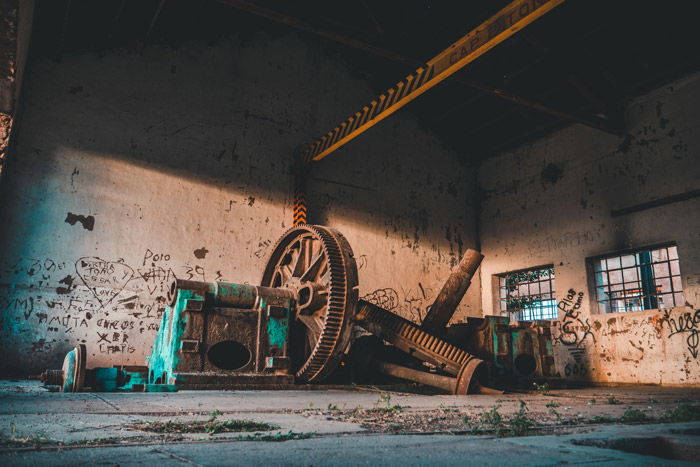
Photographing industrial sites can be dangerous for you and for others around you. Industrial sites and construction sites vary in terms of function and accessibility. But safety must be the number one priority at all times.
Familiarising yourself with the location of the shoot is the best way to plan. If you’ve seen a potential site you’d like to photograph, look it up on Google Maps. Or check out the company’s website is good practice.
And where possible, driving past the site and having a look at the layout is a good idea too. Just make sure you steer clear of any fences or restricted areas.
Once you’ve done your research, get in contact with the site manager. Never attempt to intrude on a site without authorisation.
In the past I’ve found that most staff are happy to help, especially if you offer copies of the images to them as thanks.
Once you’ve got the OK, there are a few things to keep in mind. Wearing appropriate resistant clothing on the day is a must. Dress in a thick, brightly colored, long sleeve top with full length pants and enclosed, waterproof shoes. Get shoes with steel caps if you can.
And be prepared to get more than a little dirty.
Usually a site manager will arrange for someone to escort you around the site. They may also supply you with a hard hat, a high visibility jacket and hairnets and protective eye wear if necessary. Be sure to keep all safety equipment on at all times.
Be respectful of the environment and the industrial workers. Chances are they’ll be doing hard work during your photo-shoot.
Follow any directions you’re given. That way, you can steer clear of danger zones and focus on your photography!
For industrial photography, there’s stacks of equipment I’d pack into my bag… if I could carry it all. The trick here is to bring as little as possible, leaving you to move around. But here’s the difficulty.
Industrial sites are often quite dark, requiring a slow shutter speed and a tripod. So just do your best. Pack the essentials and leave that second camera at home.
Here’s a list of equipment I would recommend bringing;
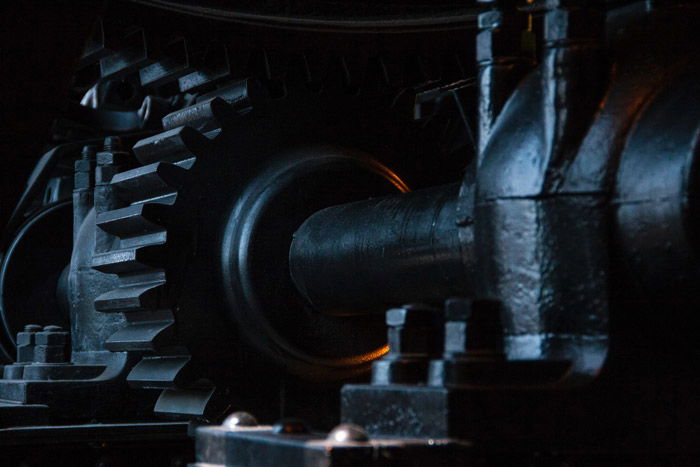
Industrial photography also presents the opportunity for lighting effects you’ll never see anywhere else.
Sparks from industrial equipment, sparce but intensely bright artificial lighting, red-hot glowing metal and natural lighting pouring in through grimy windows all create varied and fascinating visual effects.
Be prepared for a variable range of lighting situation. Bring a tripod and a flash with you and don’t be afraid to experiment a little with exposure.

One of the most striking aspects of many larger industrial sites are their sheer size. Capturing the enormity of industrial structures highlights the amazing feats modern construction can achieve.
While you’re photographing an industrial site, don’t forget to shoot the bigger picture. Take your eye away from the camera and do a visual sweep of your surroundings.
You’ll familiarise yourself with your environment for safety. And you won’t miss opportunities to focus on the overall industrial landscape.
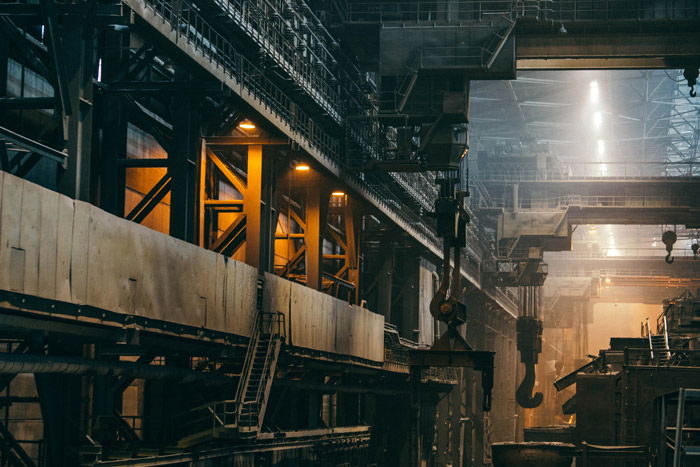
Focusing on both the big and small picture at the same time is an important skill in many fields of photography. But it’s easy to get caught up in the momentum of industrial sites. And pass over intricate details for more immediate subject matter.
Try turning your lens on features like rusty bolts, aged metal or flashes of color (often found on safety signage). These will help you add more of a story to your body of work. It’s details like these that add depth and a sense of tactility to a series.
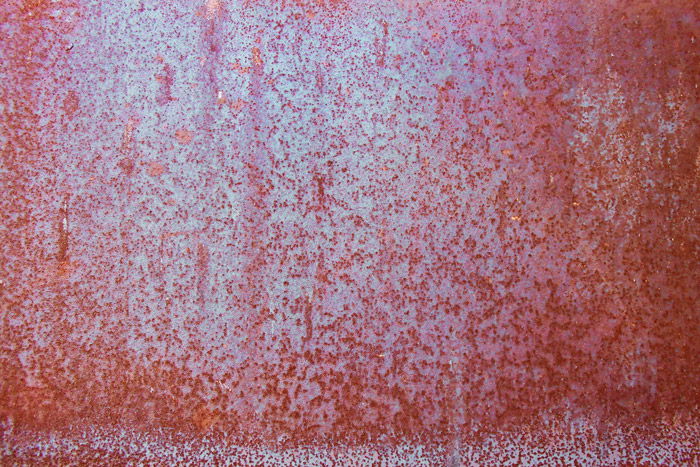
Color brings scenarios to life. Even in the depths of a dark industrial site, our eyes are programmed to gravitate towards areas of color. Incorporating color into your industrial photography is one effective way to create a more dynamic image.
Humans intrinsically associate color with particular emotions. Different hues can add a certain atmosphere to an industrial photograph too.
Think of the yellow sparks off a grinder, the red of molten steel, the blue hues of daylight creeping in. Color can be used to reinforce the story behind each individual image.
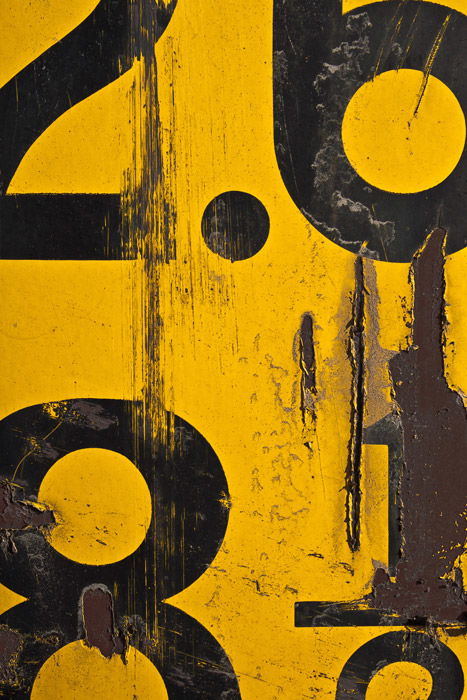
The industrial hum of the urban landscape seems to indicate a life in itself. But it’s humans that are at the heart of the machine. Photographing people at work may feel intrusive, but often people are happy to have their photo taken. Just ask!
If you are going to photograph right alongside workers, you may need to wear extra protective gear. There’s a chance that this could make it difficult to operate your equipment.
Make sure you have your neck-strap on, and make use of a tripod or solid surface where you can.
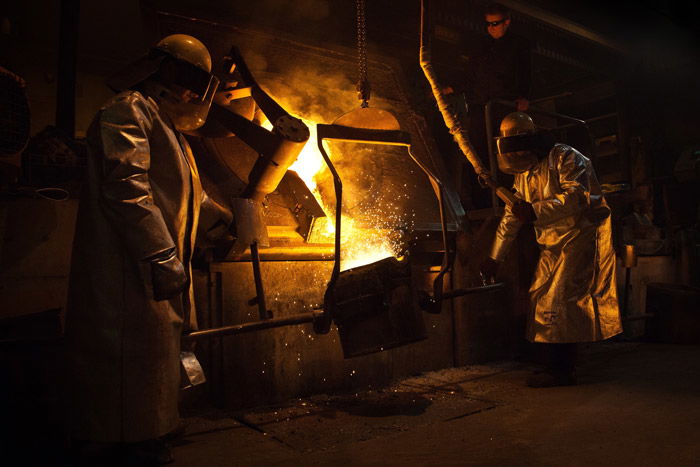
Industrial photography gives viewers the opportunity to see a world they may never have encountered in person. The creative use of perspective takes this one step further.
A well executed perspective image positions the viewer at the site of the camera. Try placing your camera on the ground (out of the way of workers). Or make your way to a high point and photographing the scene below.
You’ll find that unusual perspectives tell more about the language of the environment than a standard viewpoint.
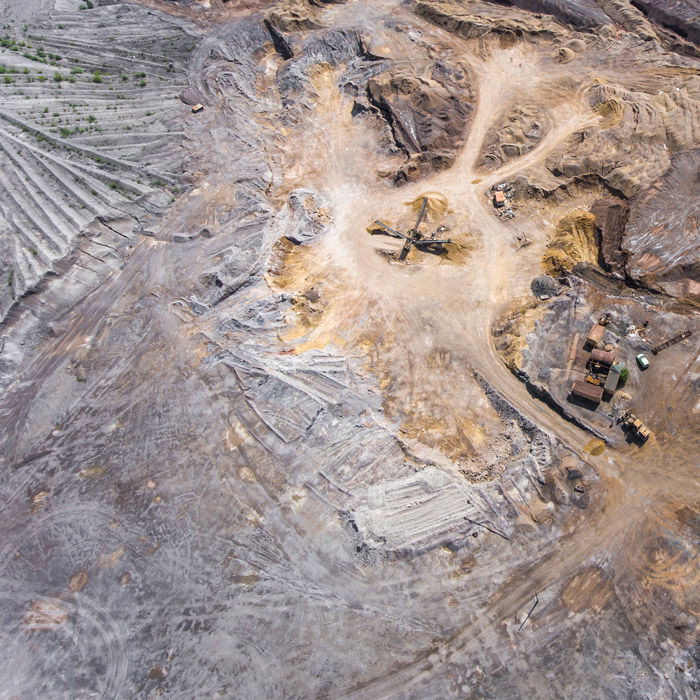
There are many abandoned and neglected industrial sites dotted around the world. Some are crumbling in disarray, others are surprisingly intact. Though many are accessed illegally and vandalised, they still make fascinating photography subjects.
And while you may be tempted to access the site yourself, its worth getting in contact with the owner first. That way you’ll save yourself a fine or a ride to the police station if you’re unlucky.
Photographing an abandoned industrial site requires serious caution. You won’t have the benefit of a safety officer. There are hazards like broken glass and unstable surfaces that can be hard to steer clear of.
But exploring the life-cycle of industry through abandoned architecture is an interesting facet of industrial photography. Just ask permission first and proceed with caution.
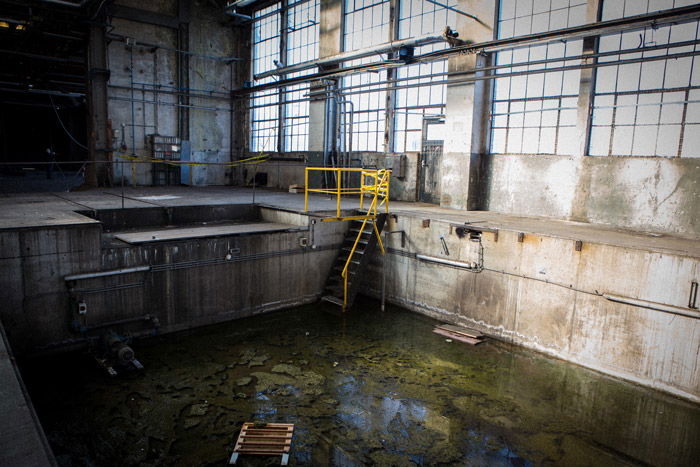
Industrial photography is a great way to create an engaging body of work. Whether it’s documenting networks of grimy machinery, taking portraits of workers hard at work or capturing the detail of the industrialised landscape.
While industrial photography may take you outside of your comfort zone, it’s well worth the trip. Maintain personal safety, follow instructions and be sure to post your results here!
